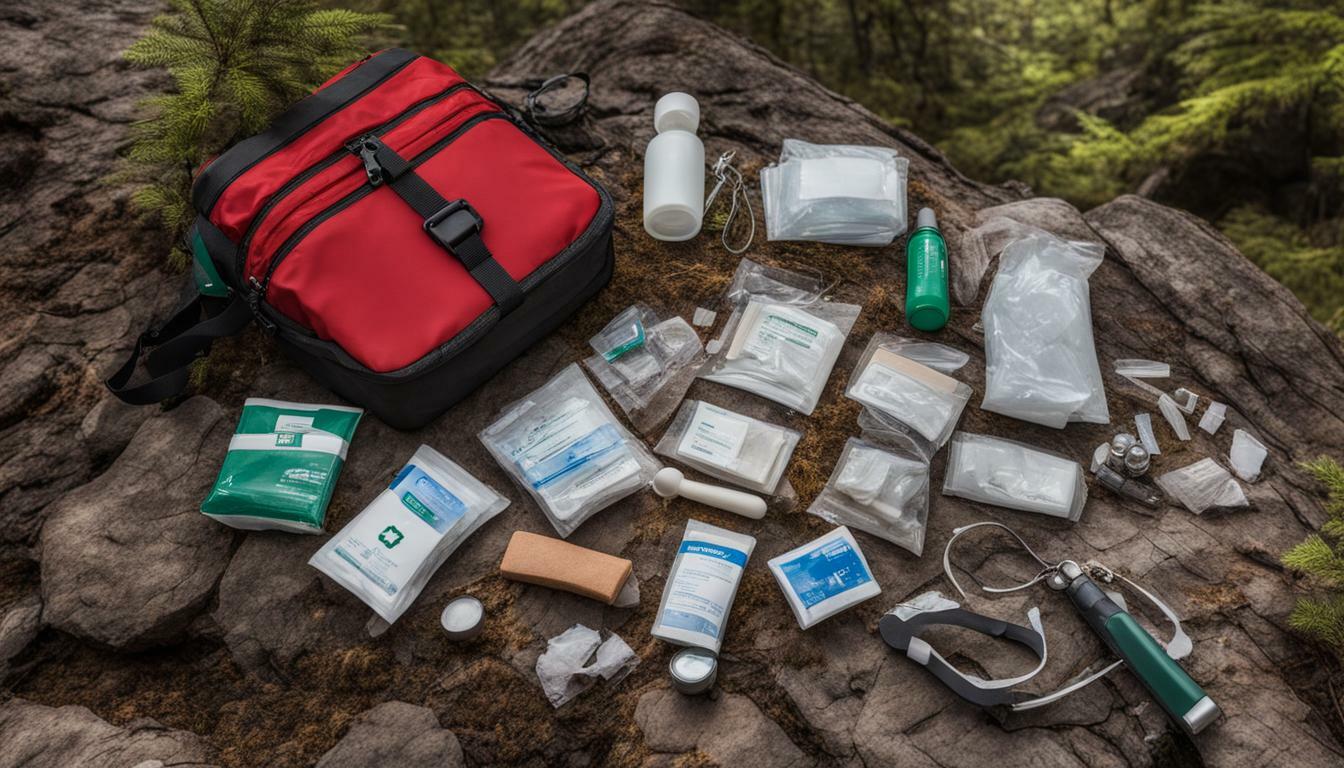Exploring the great outdoors can be exhilarating, but it also comes with risks, especially in remote regions. The beauty of nature can quickly turn treacherous, leaving individuals vulnerable to accidents and emergencies. This is where the importance of first aid kits in wilderness survival comes into play.
First aid kits are essential for anyone venturing into the wilderness, whether it’s for a day hike or a week-long camping trip. These kits can provide life-saving support in the event of an emergency, allowing individuals to stabilize injuries and wait for help to arrive.
But what exactly should be included in a wilderness first aid kit? And how can these kits make a difference in saving lives? In this section, we will explore the role of first aid kits in wilderness survival, discussing the essential items they should contain and how they can be life-saving in remote regions.
Key Takeaways:
- The Role of First Aid Kits in Wilderness Survival is essential for anyone venturing into the great outdoors.
- These kits can be life-saving in remote regions, providing individuals with support and stabilization until help arrives.
- It’s essential to know which items to include in a wilderness first aid kit, ranging from basic supplies to more advanced equipment.
Importance of First Aid in the Wild
When venturing into the great outdoors, it is essential to be prepared for any situation, including medical emergencies. Wild terrain, extreme weather conditions, and lack of medical facilities can turn minor injuries into life-threatening situations. Therefore, the importance of first aid in the wild cannot be overstated.
During outdoor adventures, accidents can occur at any time, such as falls, cuts, burns, insect bites, and more. Without the knowledge and skills to treat such injuries, they can worsen, causing severe complications and even endangering one’s life. That is why it is crucial to learn first aid skills and carry a first aid kit when exploring the wilderness.
Knowing basic first aid techniques can make a significant difference in wilderness survival. Injuries can be stabilized, pain can be eased, bleeding can be stopped, and infections can be prevented. By administering prompt first aid treatment, the victim’s chances of recovery increase significantly.
Moreover, being equipped with first aid supplies can help to save lives in remote regions. A fully stocked first aid kit can provide essential medical supplies, such as bandages, gauze, antiseptic wipes, splints, and other medical supplies needed to treat injuries until medical help arrives.
In conclusion, the importance of first aid in the wild is paramount. By having the necessary skills and supplies, individuals can be prepared to handle medical emergencies during outdoor activities. To avoid dangerous situations, it is crucial to learn first aid skills and carry well-stocked first aid kits when exploring the wilderness.
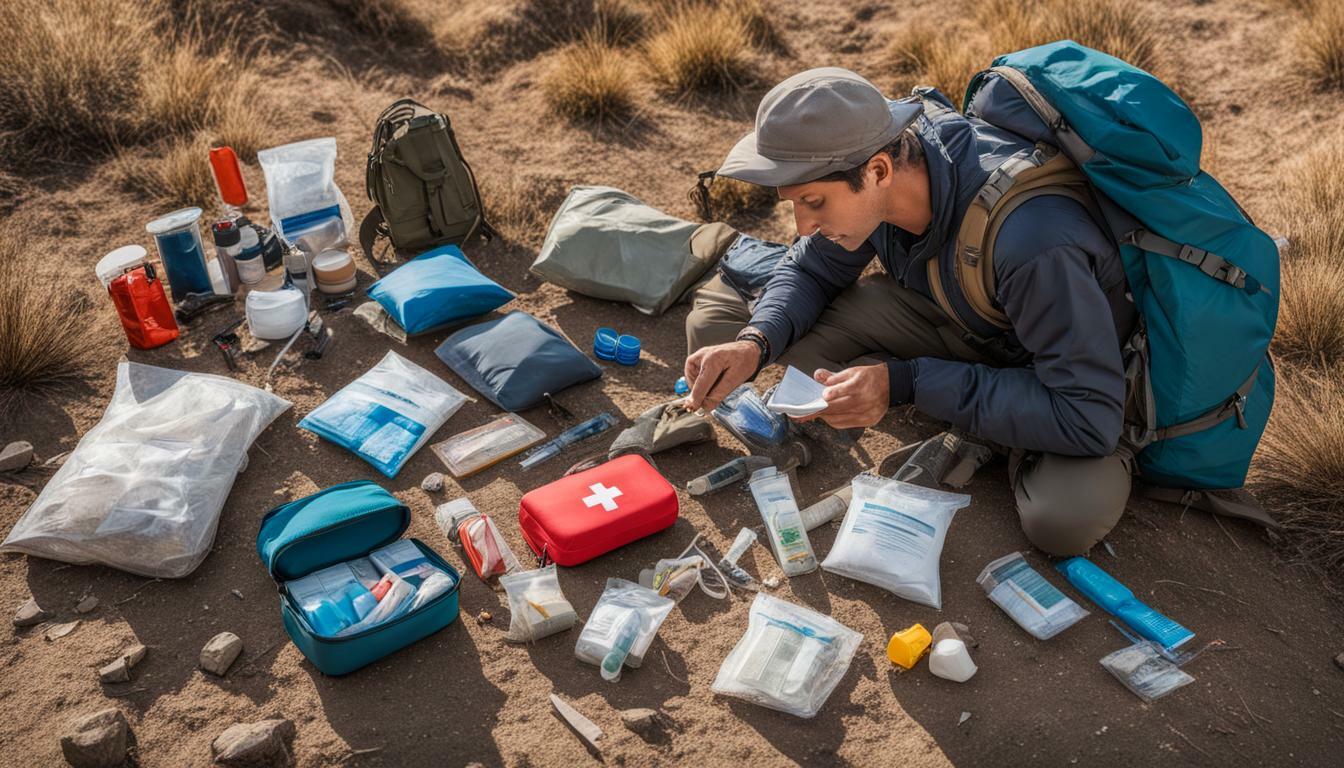
Essential Items in a Wilderness First Aid Kit
When venturing into remote regions, it is essential to carry a first aid kit that is specifically designed for wilderness survival. Such kits should contain all the necessary items to treat common injuries and ailments that can occur in the wild. In this section, we will discuss the essential items that should be included in a wilderness first aid kit.
First Aid Supplies for Wilderness Survival:
| Item | Purpose |
|---|---|
| Antiseptic wipes | To clean and sterilize wounds |
| Adhesive bandages | To cover and protect small cuts and scrapes |
| Gauze pads | To cover and protect larger wounds |
| Tweezers | To remove splinters and ticks |
| Splint | To immobilize broken bones or sprains |
| Medical tape | To secure bandages and dressings |
| Scissors | To cut dressings, tape, and clothing |
| Instant cold pack | To reduce swelling and pain |
| Emergency blanket | To retain body heat and prevent hypothermia |
| Oral rehydration salts | To treat dehydration |
Essential Items in a Wilderness First Aid Kit:
- Pain Relievers: Over-the-counter pain relievers like acetaminophen, ibuprofen, and aspirin can provide relief from aches and pains.
- Antihistamines: Antihistamines like diphenhydramine can help relieve allergic reactions.
- Thermometer: A digital thermometer can help detect fever or hypothermia.
- Hand sanitizer: Hand sanitizer can be used to kill germs and prevent infection.
- Lighter or matches: In case of an emergency, having a way to start a fire can be essential for warmth and cooking.
Above all, it is important to ensure that your first aid kit is tailored to your specific needs and the type of outdoor activity you will be engaging in. Always check your kit before embarking on any outdoor adventure and replace any expired or depleted items. By being prepared with the right supplies, you can ensure a safe and enjoyable outdoor experience.

Wilderness First Aid Tips
Administering first aid in the wilderness requires a different approach than in urban areas. Here are some practical tips to keep in mind:
- Stay calm: Panicking can make the situation worse. Take deep breaths and assess the situation before taking action.
- Assess the patient: Check for any life-threatening conditions such as bleeding or difficulty breathing. Treat these first before attending to minor injuries.
- Wound care: Clean the wound with soap and water if possible. Cover it with a sterile bandage or dressing.
- Fracture stabilization: If you suspect a fracture, immobilize the affected area to prevent further damage. Use splints or bandages to support and stabilize the limb.
- Heatstroke prevention: In hot weather, stay hydrated and take frequent breaks in the shade. Wear lightweight, breathable clothing and a hat to protect from the sun.
Remember, if you are unsure about administering first aid, it is better to wait for help to arrive or seek medical attention immediately. In remote areas, having a satellite communicator or personal locator beacon can be life-saving in emergencies.
By following these wilderness first aid tips, you can be better prepared to handle emergencies and potentially save lives.
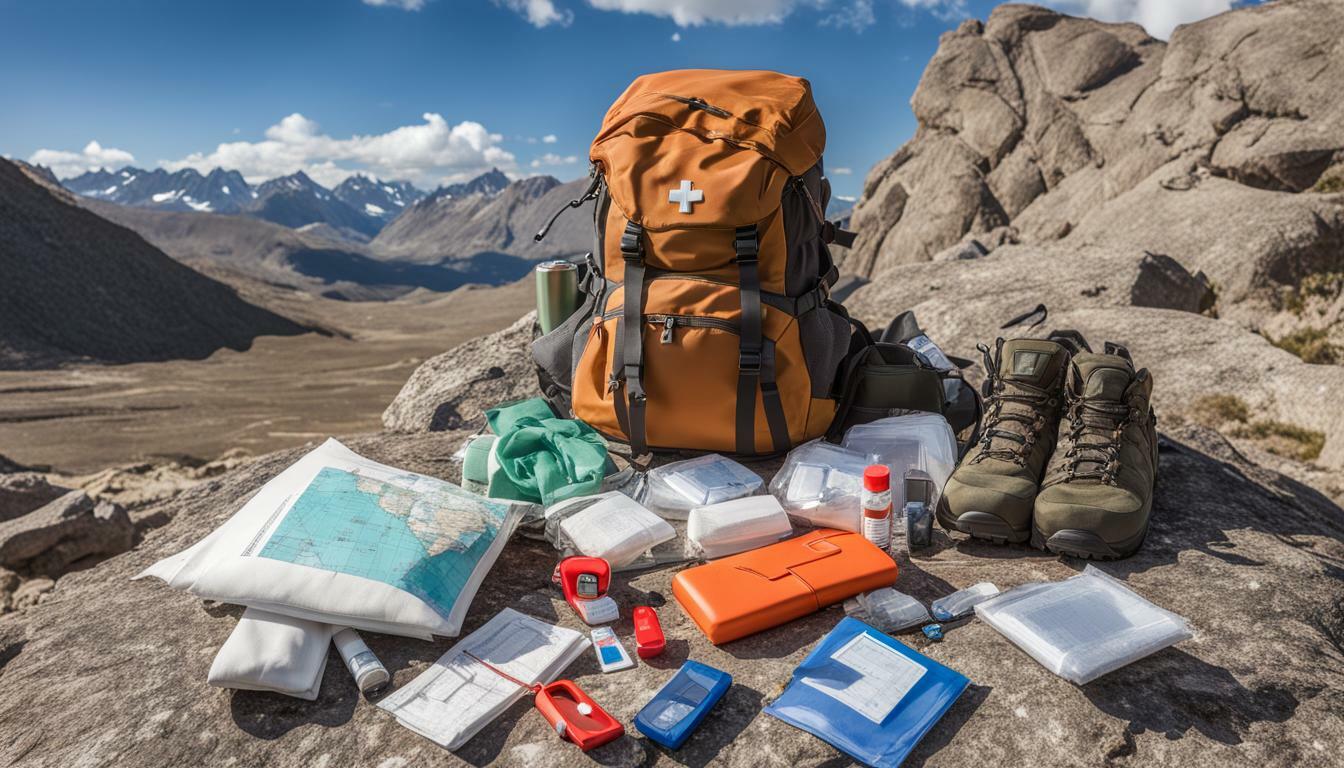
Wilderness Emergency Preparedness
Outdoor adventurers should always be prepared for emergencies in the wilderness. Being prepared can make the difference between life and death. Here are some essential tips for wilderness emergency preparedness.
Inform Others of Your Plans
Before embarking on an outdoor adventure, it is important to let someone know about your plans. Provide them with details such as your intended route, expected duration of your trip, and your estimated return time. This information will be helpful in case you don’t return as scheduled, and a search and rescue operation needs to be initiated.
Carry Emergency Communication Devices
Carry emergency communication devices such as a satellite phone, a personal locator beacon (PLB), or a two-way radio. These devices can be lifesavers if you’re in a remote location and require urgent assistance.
Come Prepared with First Aid Knowledge and Supplies
Knowing first aid techniques and carrying essential supplies can prepare you for any emergency situation. Ensure that you carry a well-stocked wilderness first aid kit that contains essential items such as bandages, gauze pads, antiseptic wipes, and adhesive tape. Familiarize yourself with basic first aid techniques, such as wound cleaning and bandaging, and learn how to provide first aid for common wilderness emergencies such as snake bites, heat exhaustion, and hypothermia.
Know Your Limits
Before embarking on an outdoor adventure, it is essential to recognize your physical and mental limitations. Always stay within your skill level and prepare for the worst-case scenario. It’s wise to have a plan in case of emergencies, such as carrying extra food, water, and clothing.
Be Prepared for Unplanned Emergencies
Emergencies can occur at any time, regardless of how well-prepared you are. Always carry additional gear, such as a headlamp, extra batteries, and a waterproof lighter.

By following these wilderness emergency preparedness tips, you can ensure a safer and more enjoyable outdoor adventure. Remember, being prepared can save your life.
First Aid Kits for Outdoor Adventures
When heading out on an outdoor adventure, one of the most important things to have with you is a first aid kit. A well-stocked and properly prepared kit can make a huge difference in an emergency situation, potentially even saving lives. Here are some essential considerations to keep in mind when choosing a first aid kit for outdoor adventures:
Size and Type
First, consider the size and type of kit that you need. You want to choose a kit that is large enough to contain all the essential items but not so bulky that it weighs you down. A good rule of thumb is to choose a kit that is appropriate for the length of your trip and the number of people in your group.
There are also different types of first aid kits available depending on the activities you’ll be doing. For example, if you’ll be hiking, camping, or rock climbing, you’ll want a kit that is specifically designed for those activities. These kits may include extra items like blister prevention and treatment supplies, or splinting materials for potential sprains or fractures.
Essential Items
Regardless of the kit you choose, there are some essential items that it should contain. These include:
- Adhesive bandages in various sizes
- Gauze pads and rolls
- Antiseptic wipes and ointment
- Tweezers
- Scissors
- Latex gloves
- Instant cold compress
It’s also a good idea to include any personal medications you may need, such as an inhaler or EpiPen, and to check the expiration dates of all items in your kit before heading out on your adventure.
Additional Considerations
When choosing a kit, you may also want to consider additional items that could be useful in an emergency situation. For example, an emergency blanket can help keep you warm and dry if you’re stranded overnight in cold weather, while a whistle can help rescuers locate you more easily. Other useful items may include a multi-tool, duct tape, and a waterproof container for storing matches or other fire-starting materials.
By selecting the right first aid kit for your needs and properly preparing it for your adventure, you can help ensure that you’re ready to handle any emergency situation that comes your way.

Wilderness Survival First Aid
When it comes to wilderness survival first aid, it’s important to know how to handle specific emergencies that can occur in remote regions. From snake bites to hypothermia, the key is to stay calm and act quickly to provide necessary treatment.
Snake bites: If a person is bitten by a snake, it’s important to stay calm and keep the affected limb immobilized. Remove any tight clothing or jewelry around the bite area, and seek medical attention as soon as possible. Do not attempt to cut or suck out the venom.
Hypothermia: When a person’s body temperature drops below the normal range, hypothermia sets in. Symptoms include shivering, confusion, and loss of coordination. To treat hypothermia, move the affected person to a warm and dry area, remove wet clothing, and wrap them in blankets or a sleeping bag. Provide warm and sweet drinks if available.
Dehydration: In hot and dry wilderness conditions, dehydration can set in quickly. Symptoms include excessive thirst, dark urine, and dry skin. To treat dehydration, encourage the affected person to drink plenty of water and rest in a cool and shaded area. Oral rehydration solutions may also help replenish electrolytes.

It’s important to note that proper preparation is key to preventing wilderness emergencies. Always carry a well-stocked first aid kit with essential supplies for treating common injuries, and familiarize yourself with wilderness first aid techniques and tips. By taking the necessary precautions, you can ensure a safe and enjoyable outdoor adventure.
Wilderness First Aid Essentials
When it comes to medical emergencies in the wilderness, having the right skills and knowledge is essential. Whether you are an experienced outdoorsman or a novice hiker, it’s important to know how to handle unexpected situations to ensure a safe outcome. Here are some of the essential skills and knowledge you should possess to provide effective wilderness first aid.
Assessment and Triage
The first step in administering wilderness first aid is to assess the situation and prioritize the injuries. This process involves determining the urgency of the injuries and deciding on the appropriate course of action. In some cases, the treatment may simply involve rest and observation, while in others, more advanced treatment may be required.
Wound Care
Proper wound care is critical to prevent infection and promote healing. In the wilderness, it’s important to clean the wound thoroughly and dress it with sterile materials. If necessary, wounds may need to be stitched or stapled, although this should only be done by a trained medical professional.
Bone and Joint Injuries
Broken bones and joint injuries can be particularly challenging in remote areas. The key is to immobilize the area until professional medical attention can be obtained. This may involve using a splint or brace to stabilize the injury and prevent further damage.
Mental Preparedness
One of the most critical skills for wilderness first aid is to remain calm and composed in high-stress situations. This allows you to make rational decisions and prioritize tasks effectively. Additionally, having a thorough understanding of first aid techniques and treatment options can help you to act quickly and confidently.
Communication and Navigation
In the wilderness, it’s essential to have a means of communication and navigation. This may involve carrying a map and compass, or a GPS device. Additionally, having a method of communication, such as a satellite phone or emergency beacon, can help to summon help in the event of an emergency.
Conclusion
Knowing how to administer first aid in the wilderness can mean the difference between life and death. By possessing the essential skills and knowledge necessary for wilderness first aid, you can be better prepared to handle any emergency situation that arises.
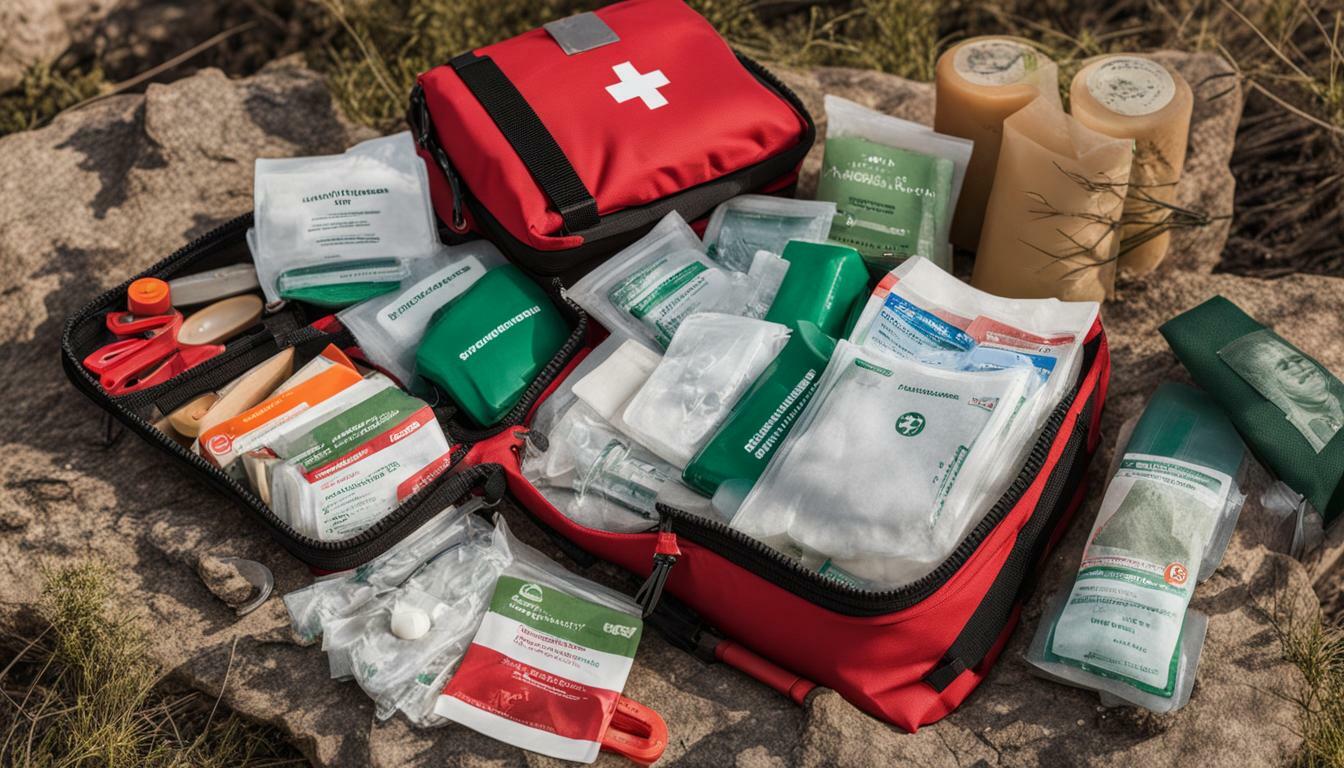
Survival Gear for Outdoor Emergencies
When going on an outdoor adventure, it’s essential to be prepared for emergencies. In addition to a comprehensive first aid kit, you should also carry survival gear to increase your chances of survival in case of an emergency.
Here are some of the survival gear items you should include in your outdoor emergency kit:
| Item | Purpose |
|---|---|
| Emergency Blanket | To keep you warm and dry, especially in cold weather |
| Fire Starter | To make a fire for warmth, cooking, and signaling for help |
| Multi-Tool | To cut, saw, and open cans or bottles |
| Water Purification Tablets | To purify water from natural sources, making it safe to drink |
| Compass and Map | To navigate and find your way if you get lost |
| Whistle | To signal for help over long distances |
| Headlamp or Flashlight | To see in the dark and signal for help at night |
Carrying these survival gear items with you can make a significant difference in your ability to survive an emergency situation in the wilderness. Remember, always check your gear before setting out on your adventure, and ensure that everything is in good working condition.
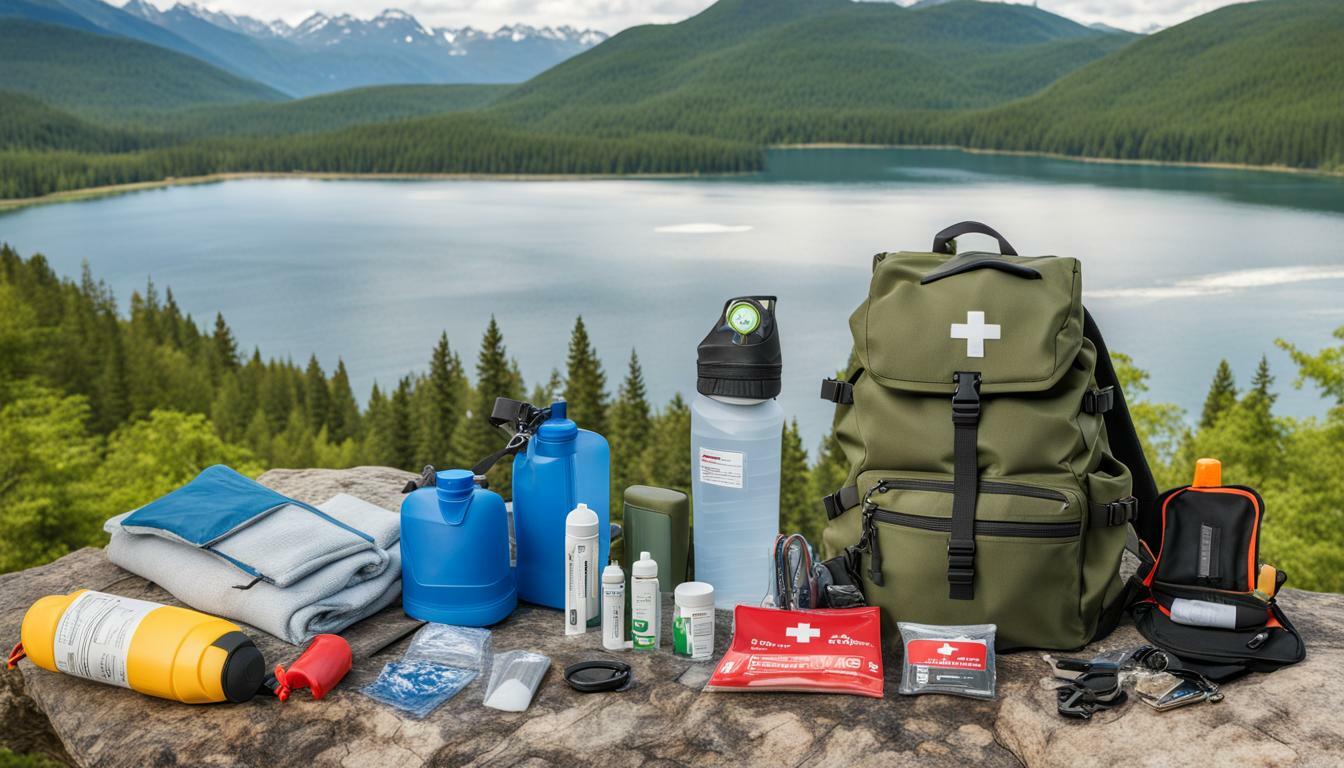
Conclusion
In conclusion, understanding the role of first aid kits in wilderness survival is crucial for anyone embarking on outdoor adventures. A properly stocked first aid kit can save lives in remote areas where medical assistance is not readily available. Additionally, having knowledge of first aid treatment and being prepared for emergencies can make all the difference in critical situations.
It is essential to ensure that your first aid kit contains all the necessary items to treat common injuries such as cuts, sprains, and insect bites. Additionally, having additional survival gear such as fire starters, water purification tablets, and emergency blankets can help you survive in harsh conditions.
Before heading out on outdoor adventures, it is crucial to inform others of your plans and carry emergency communication devices. Being aware of potential risks and emergencies can also help you make appropriate decisions during critical situations.
Remember, staying calm and having the necessary knowledge and supplies can make a significant difference in survival situations. So, ensure that you possess the essential first aid skills and knowledge required for wilderness survival, and don’t forget to pack your first aid kit before heading out on your adventure.
